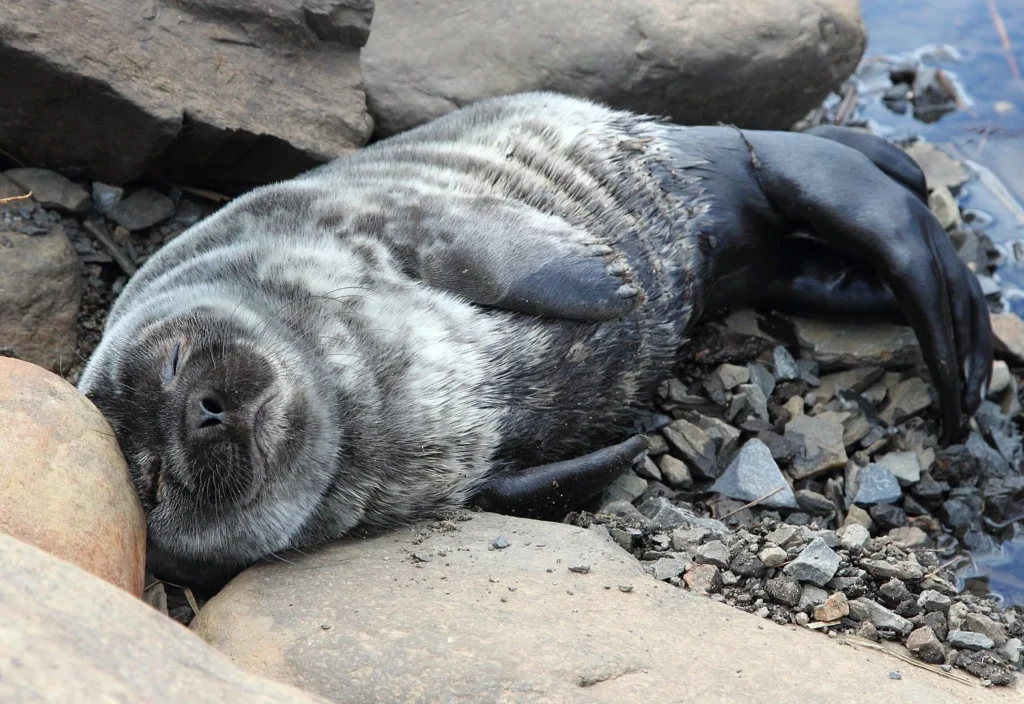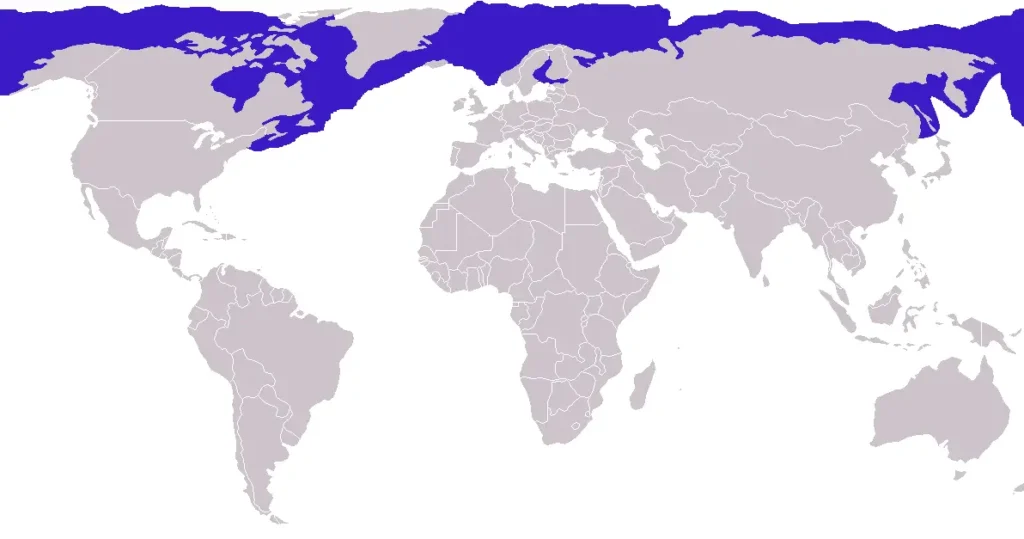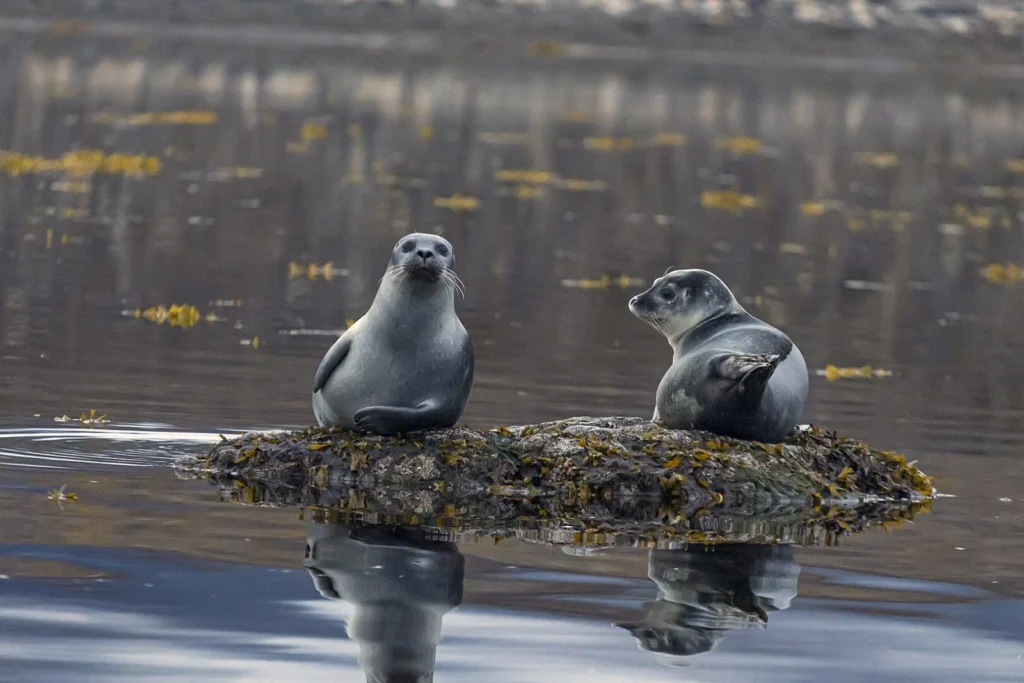Ringed seal (Pusa hispida) is one of the smallest members of the seal family (Phocidae), which lives in cold Arctic and subarctic waters. It got its name because of the characteristic pattern on its coat in the form of dark rings on a light or gray background.
This animal is ideally adapted to living in harsh conditions: its thick undercoat and thick layer of fat allow it to keep warm even in icy water. The ringed seal is an important element of the ecosystem, as it serves as food for many predators, including polar bears and killer whales.

Classification and scientific name
• The Kingdom: Animals (Animalia)
• Type: Chordal (Chordata)
• Class: Mammals (Mammalia)
• Row: Predatory animals (Carnivora)
• Family: Seal (Phocidae)
• Gender: Seals (Pusa)
• View: Ringed seal (Pusa hispida)
This species has several subspecies that differ in habitat:
✅ Arctic ringed seal (Pusa hispida hispida) - lives in the Arctic Ocean
✅ Baltic ringed seal (Pusa hispida botnica) - lives in the Baltic Sea
✅ Ladoga seal (Pusa hispida ladogensis) - in Lake Ladoga
✅ Saimaa seal (Pusa hispida saimensis) - in the Finnish Lake Saimaa
✅ Okhotsk seal (Pusa hispida ochotensis) - in the Sea of Okhotsk
Physical characteristics
Dimensions and weight
📌 Body length: 85-160 cm
📌 Weight: 32-140 kg (depending on the subspecies)
The ringed seal is much smaller than other members of the seal family, such as the sea leopard or crab seal.
Color and fur
✔ Main coat color: silver gray or dark gray
✔ Pattern: characteristic dark rings on a light background
✔ Undercoat: thick and waterproof
A thick layer of fat (up to 5 cm) helps the seal keep warm and survive in icy waters.

Range and habitat
🔵 Spread
The ringed seal lives in the cold seas of the Northern Hemisphere:
• Arctic Ocean (Arctic)
• The Baltic Sea
• Sea of Okhotsk
• Ladoga and Saimaa lakes
🔴 Living environment
✔ Ice fields and coastal areas
✔ Freshwater lakes (for some subspecies)
✔ Offshore waters with access to fish
In winter, the seal cuts special breathing holes in the ice to get access to air.
Lifestyle and behavior
🌟 Social structure
✅ Lives alone or in small groups
✅ Females with cubs are often kept apart from others
🌟 Activity time
✅ It hunts mainly at night
✅ During the day, he often rests on the ice or underwater
🌟 Main behavioral features
✔ Noses very careful and avoid predators
✔ Know how to cut holes in the crisis with the claws of the front flippers
✔ Can hold their breath for up to 30 minutes

Food and hunting
🍖 Predatory lifestyle
Ringed seals feed mainly on fish and invertebrates.
✅ Typical food sources:
✔ Herring, cod, smelt
✔ Crayfish, shrimp, squid
✔ Small crustaceans
💡 Hunting methods
- Hunts underwater using sensitive whiskers (vibrissae)
- Detects prey even in dark and muddy water
- Withstands long dives looking for fish
Reproduction and life cycle
❤️ Mating season: February-April
❤️ Pregnancy: 8-11 months
❤️ Number of children: 1 (rarely 2)
❤️ Puberty: 3-7 years
👶 Babies are born white (flounder)which helps them to camouflage themselves in the snow.
👩👧 The mother feeds the baby with fatty milk (up to 50% of fat) for 5-7 weeks.
🧬 Life span: 25-30 years old.

Natural enemies and threats
🔴 Predatory animals
✔ Polar bear is the main predator of seals
✔ Killer whales - hunt seals in open water
✔ Foxes and wolves are a threat to cubs on the ice
🔴 Threats from humans
✔ Melting ice due to climate change
✔ Poaching (hunting for fur and fat)
✔ Water pollution and industrial fishing
Protected status and rescue efforts
🟢 Security status:
🔹 In most regions ringed seal is not endangered.
🔹 Individual subspecies, such as Saimaa seal and Baltic seal, considered vulnerable.
🟢 Security measures:
✔ Creation of nature protection zones
✔ Hunting restrictions and pollution control
✔ Monitoring of populations
Conclusion
The ringed seal is an amazing animal that survives in the harshest conditions of the Arctic. It has unique adaptations to the cold, is an important part of the ecosystem, and needs to be protected due to climate change and human impact.